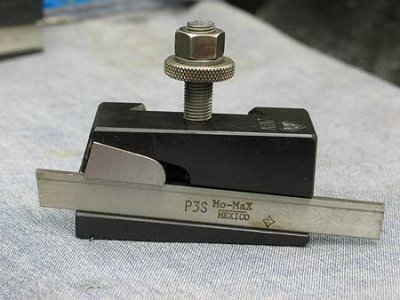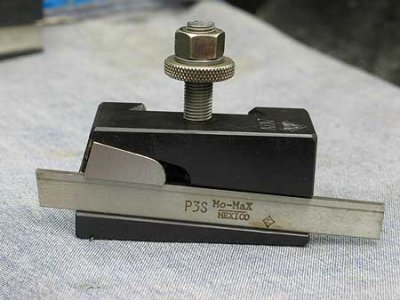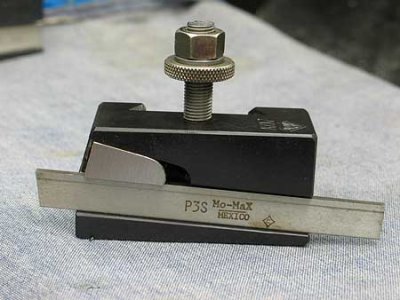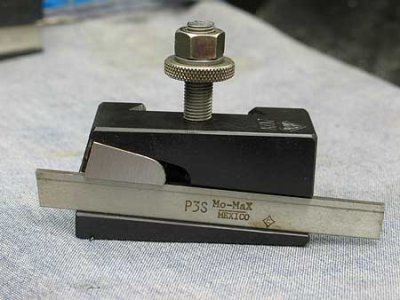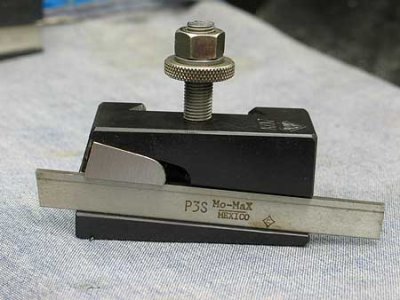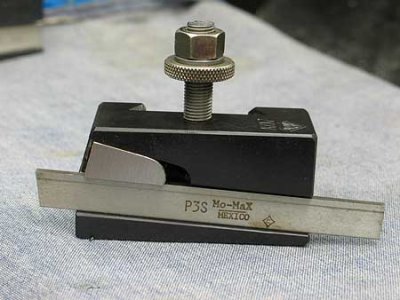- Joined
- Dec 20, 2012
- Messages
- 9,422
You're using a P3S blade, which is 1/8" wide. It will take more pressure to cut than a thinner blade will.
If you look at the front relief angle with the tool holder on a level surface you have maybe 5 degrees of relief? With high feed pressure you may have some contact with the work. I would try increasing that to 10 degrees and see if that makes a difference.
If you look at the front relief angle with the tool holder on a level surface you have maybe 5 degrees of relief? With high feed pressure you may have some contact with the work. I would try increasing that to 10 degrees and see if that makes a difference.


